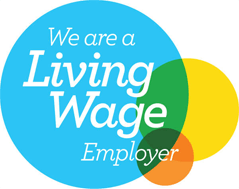Shared Parental Leave for Employers
Shared Parental Leave (SPL) is a scheme that allows families more choice over how they look after their children in the first year. The regulations are detailed and complex. Acas have issued a good practice guide and the government an employers’ technical guide.
Where the eligibility criteria are met, mothers are be able to convert up to 50 weeks of their maternity leave and 37 weeks of their statutory maternity pay into SPL and pay, and share it with their partner. SPL allows parents to share caring responsibilities, taking time off together if they choose or have one parent taking the main caring role. Unlike maternity/adoption leave, eligible employees can stop and start their SPL and return to work between periods of leave. Each eligible parent is able to put in for three notices booking periods of leave (although you as the employer may allow more).
Eligibility
SPL can be taken by a mother and someone who is either the child’s father or the mother’s spouse, civil partner or partner, and who has the main responsibility for caring for the child (other than the mother).
“Partner” means a person living with the child’s mother and the child in an enduring family relationship.
Also, a parent wanting to take SPL is required to satisfy the ‘continuity of employment test’ and their partner must meet the ‘employment and earnings test’.
Under the continuity of employment test, the parent must have worked for the same employer for at least 26 weeks at the end of the 15th week before the child’s expected due date/matching date and is still working for the employer at the start of each leave period.
Under the employment and earnings test, the partner, in the 66 weeks leading up to the baby’s expected due date/ matching date, must have worked for at least 26 weeks and earned an average of at least £30 a week in any 13 weeks.
It will be seen from the eligibility criteria that only employees can take SPL but, provided that both parents have been economically active (that is, they satisfy the employment and earnings test) it is not necessary for both to be employees. For example, if the mother is an employee, but the father is self-employed, the father will not qualify for SPL but the mother will, and can still opt into the SPL regime. This means that she could take some maternity leave, then go back to work, and then take a further period of SPL at a later date.
Mothers who do not have a partner, or whose partners have not been economically active, will not have this option. Entitlement to SPL is the same regardless of how many children are born as a result of the same pregnancy.
Leave can only be shared with one other person.
Duration of SPL
The maximum amount of SPL that can be shared between the parents is 50 weeks. This is derived from the mother’s 52 weeks of maternity leave less the two weeks’ that must be taken. However, the aggregate amount available in any case will be the amount by which the mother curtails her entitlement to maternity leave.
Booking SPL
Parents wishing to take SPL may need to submit up to five notices to you as the employer. The mother will need to submit at least 8 weeks’ notice to curtail her statutory maternity leave. Both parents will also need to submit both a notice of entitlement and intention to take SPL, and a notice to take SPL to “book” the leave, at least eight weeks before the start date of the first period of SPL. Variation notices will need to be submitted where these notices need to be changed.
Patterns of SPL
SPL may be taken at any time, from the child’s date of birth to the day before the child’s first birthday. However, the mother cannot start SPL until she has completed her 2 week compulsory maternity leave. Also, partners will lose their entitlement to Ordinary Paternity Leave if they take their SPL first. Therefore, in practice, most partners will take their Ordinary Paternity Leave before taking SPL, to avoid losing that entitlement.
Apart from these restrictions, there is a lot of flexibility. A partner can take time off at the same time as the mother, or separately. This means that a partner can take leave when the mother is still on maternity leave, provided that she has given notice to curtail her entitlement to maternity leave.
Each parent can take their SPL as one continuous period or up to three discontinuous periods of leave. SPL can be for a period as short as a week or as long as the maximum 50 weeks. This is provided that employees give sufficient and proper notice, employers cannot refuse their request for leave.
Keeping in Touch days
Your employee may attend up to 20 SPL keeping-in-touch (KIT) days, known as SPLIT days, without bringing SPL to an end, in addition to the ten KIT days that a mother may take. Therefore, a mother who takes maternity leave and SPL will be able to work for her employer for up to 30 days without bringing the maternity leave or SPL to an end. However, there is no obligation on employers or employees to agree to SPL & KIT days.
Rights during and on return from SPL
As in the case of maternity leave, an employee’s terms and conditions, other than entitlement to pay, are preserved during SPL. The employee has a right to return to the same job after SPL if the total aggregate amount of relevant statutory leave taken by the employee, including the SPL, is 26 weeks or less.
Relevant statutory leave means statutory maternity, adoption, paternity and shared parental leave. However, where more than 26 weeks were taken or the SPL was taken immediately after a period of unpaid parental leave of more than four weeks or a period of additional maternity or adoption leave, the right is to return to either the same job. If that is not reasonably practicable, the employee has a right to a job that is both suitable and appropriate for the employee to do, looking at the nature of the work set out in the contract of employment, capacity and the place where the employee was employed before the absence.
It is automatically unfair to dismiss, or select for redundancy, an employee when the reason or principal reason for the dismissal, or selection for redundancy, is connected to SPL.
Employees are also entitled not to be subjected to any detriment by an act or failure to act by their employer for a reason connected to SPL. If the employee’s role becomes redundant during SPL, the employee has the same priority in relation to alternative employment as applies to women on maternity leave.
Policies and Procedure
To ensure consistency in making and responding to notifications regarding SPL it is a good idea for employers to set out the working arrangements and the employee’s rights in a policy or workforce agreement. It can be a standalone policy, which refers to and interacts with other family friendly policies, or it could be included within a wider maternity and paternity policy.
Some employers may decide not to have an SPL policy. However, they should ensure their employees know how to apply for SPL and must still meet the statutory minimum requirements in the legislation.
When developing an SPL policy, any existing consultation and/or negotiating arrangements should be followed so that employees or their representatives can contribute to it.
How we help employers deal with Shared Parental Leave
Our specialist solicitors advise on best practice with regards to Shared Parental Leave. This includes advice to ensure equality in the workplace and avoidance of any discriminatory practice. We can provide Shared Parental Leave policies for birth and adoptive parents.
Contact us today on 01273 609911, or email info@ms-solicitors.co.uk for further advice and information.


